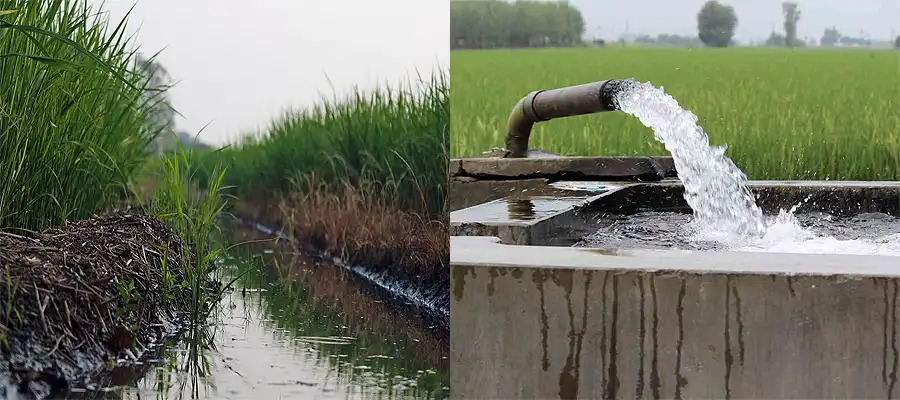In a concerning development, the Central Government's report on the groundwater of India paints a worrisome picture for many states. The Annual Ground Water Quality Report-2024 was released by the Central Ground Water Board (CGWB) in December 2024. While the report outlines that groundwater in multiple states is no longer fit for drinking, the situation is worrying in Punjab as it is an agricultural state and of course granary of India. The situation is the same in Haryana.
The report has found that groundwater in Punjab has become toxic as elevated levels of toxic chemicals like uranium, nitrates, arsenic, chloride, and fluoride were found in it. Outlined in the 'specific contaminants of concern', CGWB report reads-
CGWB report on Punjab Groundwater
Arsenic contamination: "Elevated arsenic levels (>10 ppb) were found in several states, particularly in the floodplains of the Ganga and Brahmaputra rivers. This includes regions of Punjab, West Bengal, Jharkhand, Bihar, Uttar Pradesh, Assam, Manipur, and Rajnandgaon district in Chhattisgarh."
Uranium Contamination: A notable concern in the groundwater quality report is the elevated levels of uranium in several regions. 30% of samples with uranium concentrations exceeding 100 ppb came from Punjab. However, Rajasthan's situation on uranium contamination is even worse as 42% of the samples were found contaminated with the said chemical. The report outlined that the results indicate regional hotspots of uranium contamination.
CGWB also identified groundwater samples with uranium concentrations greater than 30 ppb were clustered in areas 'identified as Over-exploited, Critical, and Semi-Critical groundwater stress zones, such as Rajasthan, Gujarat, Haryana, Punjab, Tamil Nadu, Andhra Pradesh, and Karnataka."
The data points to the exacerbating effect of overexploitation and deepening water levels on uranium contamination in these regions.
Ultimately, the report termed Punjab along with other states like Rajasthan, Delhi, Gujarat, Haryana, Telangana, Andhra Pradesh, and Karnataka, as most severely affected by high EC value in
groundwater.
As per the information available, Pure water has a very low EC because it has almost no dissolved ions, while tap water has an EC of 100–500 \(\mu S/cm\), River or lake water can have an EC of 50–1500 \(\mu S/cm\), depending on pollution and mineral content.
The report explained the reason behind the rise in the EC value of groundwater in Punjab and other states. The report reads, "States like Rajasthan, Punjab, Haryana, and Western Uttar Pradesh rely heavily on
groundwater for irrigation. Over-extraction, coupled with high evaporation rates in these semi-arid regions, results in a concentration of salts in the remaining groundwater, leading to high EC values."
Groundwater quality for irrigation in Punjab
The report further highlighted contamination of groundwater that can majorly impact irrigation in Punjab and other states. The Centre's report evaluated Sodium Adsorption Ratio (SAR) and Residual Sodium Carbonate (RSC) values, which are key indicators of water suitability for irrigation.
In its report, it found that It was found that 0.76% of samples of water from Punjab fall in the very high sodium range and are unsuitable for use in irrigation practices.
Districts of Punjab where the amount of fluoride in the groundwater is higher than the recommended limit
- Amritsar
- Bathinda
- Faridkot
- Fatehgarh Sahib
- Fazilka
- Ferozepur
- Gurdaspur
- Hoshiarpur
- Jalandhar
- Mansa
- Moga
- Muktsar
- Nawanshahr,
- Patiala
- Sangrur
- SAS Nagar
- Tarn Taran
